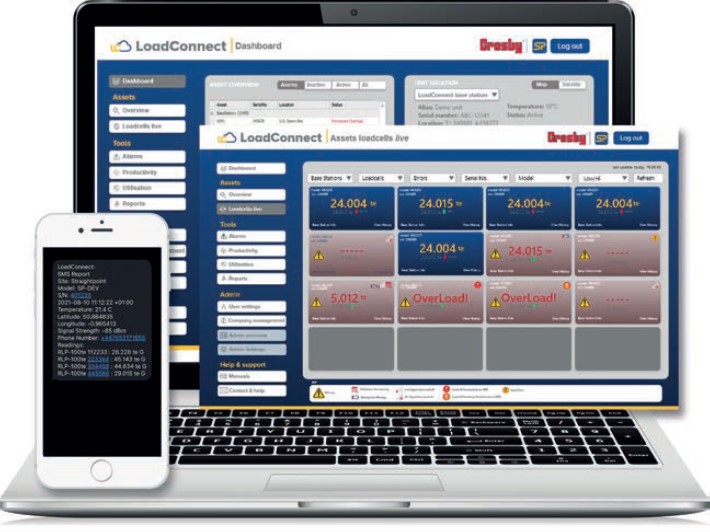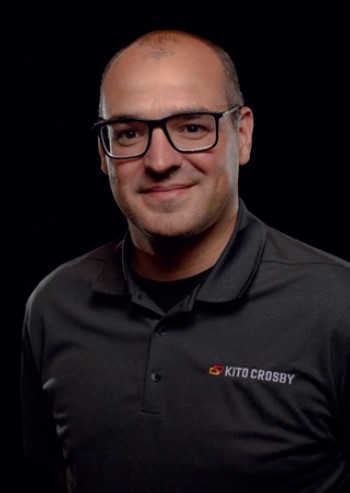Load monitoring: Cloud connect
5 February 2024Kito Crosby’s Thomas Dietvorst expands upon last year’s launch of the cloud-based Crosby Straightpoint LoadConnect product.
Kito Crosby launched Crosby Straightpoint LoadConnect last summer – a cloudbased software solution that monitors loads and enables users to remotely observe load cell data via an online dashboard.
One wireless base station can connect up to 16 Crosby Straightpoint wireless load cells, with an option of one cabled load cell. The base station transmits load cell data to the LoadConnect dashboard via a chosen network or nearby WiFi.
The dashboard provides users with real-time load data, monitors errors and status, and has a map displaying the product location. Users can also access more in-depth statistics, historical readings, and view analytics, as well as schedule reports directly to any chosen email.
“It enables any Straightpoint load cell, whether that is a wireless one or a wired one, to connect up to a LoadConnect base station and that base station will transmit all the data it collects from up to 16 load cells simultaneously in about a kilometre radius,” adds Thomas Dietvorst, Kito Crosby’s senior global product director, wire rope hardware and tech solutions.
“But imagine if you have a production facility in Waterlooville [UK, where Kito Crosby has a facility], and you also have one in Amsterdam, and you have one in Antwerp, and there is a base station in each individual location, they will all send their data into the same cloud dashboard, so you can monitor all of your assets – calibration status, battery status of all the load cells, and so forth – from one application anywhere in the world.
“And the amount of base stations you can add to the cloud portal is infinite.”
When developing the product, Dietvorst says Kito Crosby had two main sectors in mind. The first was telecoms towers in remote locations in Asia-Pacific and Latin America, where guide wire tensions are monitored. One of the benefits of LoadConnect in this environment, he says, are that problems can be identified and addressed quickly, in a way that isn’t possible with periodic in-person maintenance visits.
The second sector was, of course, industrial overhead cranes. Here, Dietvorst says the benefits of the Kito Crosby product is that it can – when load cells are installed in combination with LoadConnect – display the productivity of factory cranes by, for instance, relating the number of lifts during a specific timeframe, such as one or two days, up to year. (“You can store quite a chunky bit of data,” Dietvorst adds.)
That means, he continues, that if a business has five factory sites, all with an overhead crane, LoadConnect can highlight if one crane isn’t performing as many lifts as the others, which in turn might indicate an operator lacking confidence, for instance, therefore providing the company with a training opportunity.
Speaking at the time of the launch last year, Dietvorst described the software solution as “ground-breaking”.
“LoadConnect will prove to be a game-changer for anyone using our wireless load cell range in industries such as telecommunications… eliminating the need for personnel to regularly visit remote locations to check line and wire tension. There are also many use cases in the construction sector and other industries where similar projects are common, such as ship building to monitor weight as loads are applied and nuclear power plants to prevent catastrophe.”
He ends by saying that it is both effective and easy to use, and that there aren’t any direct rivals in the industries in which it has been designed to operate.

